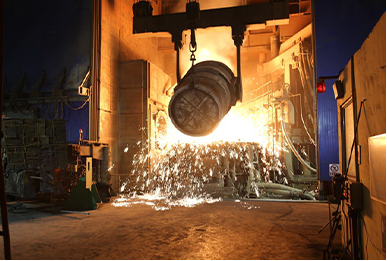Jul . 27, 2024 22:49 Back to list
Exploring the Most Effective Materials for Optimal Thermal Insulation Solutions and Applications
The Best Thermal Insulator Materials An Overview
Thermal insulation plays a crucial role in various applications, from construction and manufacturing to the design of everyday products. Insulation helps maintain desired temperatures, enhance energy efficiency, and provide comfort. Understanding the best thermal insulator materials is essential in contexts where heat transfer needs to be minimized.
What is Thermal Insulation?
Thermal insulation refers to materials that reduce the rate of heat transfer between objects at differing temperatures. The effectiveness of an insulator is quantified using its thermal conductivity—a lower value indicates better insulating properties. Thermal insulation can be classified into several categories, including rigid, flexible, and spray foam, each serving specific applications.
Common Thermal Insulating Materials
1. Fiberglass Fiberglass is one of the most commonly used insulating materials in residential and commercial buildings. It consists of fine glass fibers that trap air, providing excellent thermal resistance. With a thermal conductivity rating of about 0.04 W/m·K, it is effective at reducing heat transfer and is widely available in batts and rolls.
2. Polyurethane Foam Polyurethane foam is a versatile insulator with a lower thermal conductivity (as low as 0.02 W/m·K) compared to traditional materials. Its effectiveness is due to the trapped gas bubbles within its structure. This type of insulation can be applied through spraying, which allows it to adhere to irregular surfaces, offering superior thermal protection.
3. Cellulose Made from recycled paper products, cellulose insulation is an environmentally friendly option that offers excellent thermal performance. With a thermal conductivity around 0.04 W/m·K, cellulose is treated with fire retardants and pest repellents to enhance its safety and longevity. It is typically installed in attics and wall cavities.
best thermal insulator material

4. Polystyrene Expanded and extruded polystyrene are rigid insulation boards that provide an excellent barrier to heat flow. They have a thermal conductivity of approximately 0.03 to 0.04 W/m·K. Commonly used in walls, roofs, and foundations, polystyrene insulation is lightweight and resistant to moisture.
5. Mineral Wool Also known as rock wool or slag wool, mineral wool is produced from volcanic rock or industrial waste. It is non-combustible, providing both thermal insulation (with a thermal conductivity of about 0.04 W/m·K) and soundproofing properties. It is often used in high-temperature applications as well.
6. Aerogel Often referred to as the world's best insulator, aerogel boasts a thermal conductivity as low as 0.013 W/m·K. This ultra-light material was initially developed for space missions and is now being used for various applications, including building insulation and clothing. Aerogel’s porous structure contains a significant amount of air, leading to its exceptional insulating properties.
Considerations for Choosing Insulation Materials
When selecting thermal insulation materials, several factors must be considered
- Thermal Performance Evaluate the thermal conductivity of materials to ensure they meet specific insulation requirements. - Moisture Resistance Choose materials that resist moisture to prevent mold growth and degradation. - Fire Safety Consider the fire resistance of materials, particularly in residential and commercial spaces. - Sustainability Eco-friendly options, such as cellulose insulation, can reduce environmental impact while still providing effective insulation.
Conclusion
Selecting the best thermal insulator material depends on application needs, environmental considerations, and budget. Options like fiberglass, polyurethane foam, and aerogel offer a range of thermal resistance levels suitable for different contexts. As technologies advance, innovative insulation materials continue to emerge, promising enhanced energy efficiency and sustainability for the future.
-
Eco-Friendly Granule Covering Agent | Dust & Caking Control
NewsAug.06,2025
-
Fe-C Composite Pellets for BOF: High-Efficiency & Cost-Saving
NewsAug.05,2025
-
Premium Tundish Covering Agents Exporters | High Purity
NewsAug.04,2025
-
Fe-C Composite Pellets for BOF | Efficient & Economical
NewsAug.03,2025
-
Top Tundish Covering Agent Exporters | Premium Quality Solutions
NewsAug.02,2025
-
First Bauxite Exporters | AI-Optimized Supply
NewsAug.01,2025
